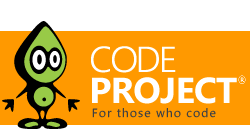Everything / Languages / F#
F#
F#
Great Reads
by Member 12660776
Programmatically Adding New ConfigurationSectionGroup Corrupts Declaration Section With Multiple Group Declarations.
by Farhad Reza
We will design two interesting characters in this tip.
by Sander Rossel
Journey to the center of the .
Latest Articles
by Member 12660776
Programmatically Adding New ConfigurationSectionGroup Corrupts Declaration Section With Multiple Group Declarations.
by Farhad Reza
We will design two interesting characters in this tip.
by Sander Rossel
Journey to the center of the .
All Articles
by Cyborgx37
A simple F# application that solves Sudoku puzzles.
by SneakyPeet
Delayed dependency resolution the right way
by Hideous Humpback Freak
Using an F# library for immutable objects reduces required code by an amazing amount.
by Sacha Barber
Now that we have some of the basic types and pattern matching under our belts,
by Sacha Barber
We continue our OO journey,
by Sacha Barber
Last time we looked at the Async class,
by Sacha Barber
So we continue our journey into more of the F# types.
by Sacha Barber
Any serious programming you do in any language will always involve lists.
by Sacha Barber
Last time we looked at the List module,
by Sacha Barber
So last time we looked at Arrays,
by Sacha Barber
We continue our journey into F#,
by Sacha Barber
We are nearing the end of one of the main sections of this function series,
by Sacha Barber
So in the last bog,
by Sacha Barber
As previously stated F# allows different styles of programming that is you can use of or all of the following: Functional Imperative OO In F# you have choices and you are free to mix and match these styles to suit your needs.
by Sacha Barber
We now start the OO leg of our F# journey,
by Sacha Barber
So we are about 1/
by Sacha Barber
This time we will wrap up the OO leg of our F# journey,
by Sacha Barber
Ok so we just wrapped up the final dedicated chunk of the main F# areas,
by Sacha Barber
In this post we will look at using a reactive programming paradigm within F#.
by Sacha Barber
Last time we looked at reactive programming,
by Sacha Barber
In this post we will examine how F# can be used to do various tasks that you may have commonly use C#/
by Sacha Barber
One of the things you will most likely need to do when you work with any language is format text,
by James Kolpack
Solving a problem like a Euler using F#
by Madhur Kapoor
One of the quickest way to get your code up and running in Azure is to use Azure Functions which makes use of the serverless architecture.
by Fitim Skenderi
CodeProject Lately I have been playing around with F#,
by Shameel
.

